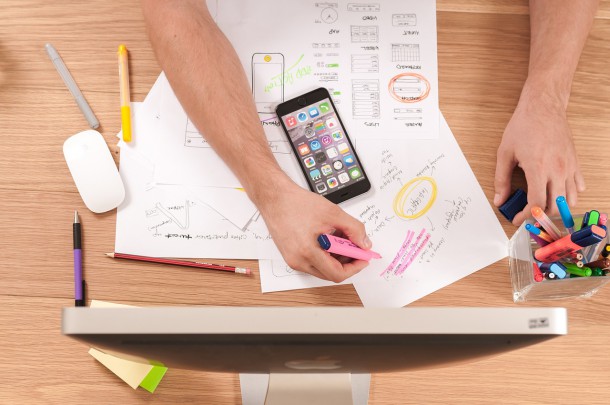Did you ever imagine that the IT industry which has brought us productive solutions and innovations would also help us to be more healthy? Believe it or not, technology has come a long way and is tremendously changing the way the healthcare industry functions.

With the sturdy acceptance of smartphones, mobile apps have opened up new avenues for healthcare professionals. From doctors to patients and practitioners, all are using the mobile applications to facilitate easier and quicker healthcare operations and better care for patients. According to Research 2 Guidance, “The market for mHealth (mobile health) app services is expected to reach $26 billion by 2017.”
The top healthcare firms are already exploring the potentialities of application development for mobile to provide remote monitoring and healthcare management services via mobile app. Let us study some of the ways the technology is influencing healthcare industry.
Providing Access To Immediate Care: The days when doctors use to make an in-home visit is now replaced by the digital visit. Whether you want to book an appointment with a doctor, or need a doctor in case of emergency, mobile app like Doctor on Demand can help you find a top doctor and video chat within a matter of seconds. This way you never have to make a potentially dangerous visit to a hospital or keep waiting during emergencies. Another mobile app called, HealthTap allows you to ask general health questions to doctors 24/7. It doesn’t require you to take prior appointments. In addition, this app can be used by the physicians to directly and regularly keep in touch with their patients. This type of virtual interaction is more beneficial for elderly people and children who in most cases are too sick to be shifted to a hospital.
Presenting New Business Models: Using referral pads or making door-to-door visits to foster relationships with patients is now outdated. The RefferalMD mobile app, which is operating in test mode for now, will soon change all the traditional referral methods. This cloud-based application will help doctors to write quick and resourceful referrals. In addition to that, ReferralMD is a great solution to fulfill the massive surge of patient data digitally by allowing medical organizations to market themselves to both new patients and healthcare providers looking for treatment services. As ReferralMD is designed to function with all management practices and software, running medical businesses and keeping patients healthy will become more facile.
Connecting Doctors and Patients Directly: Have you ever been through the struggle of communicating with a doctor in a different language? SAIC has created a mobile app named, Omnifluent Heath where a patient and a doctor speaks into their phone, and the concerns or queries get instantly translated into the language they desire. This huge development is helping doctors all over the world, including in the US, where 47 million residents do not speak English. Now hospitals and healthcare companies can save their cost they spent on translators. PingMD, is yet another medical app, which allows doctors and patients to securely message each other. A doctor can send invite to the patients and share medical details, images, and questions. This app can also be used by doctors internally and they can view the lab results at the same time.
So, it is clear that technology is providing a much-needed update to the healthcare industry. From medical assessment to medical translation, mobile applications are helping patients live a healthy happy life.
Are you using any healthcare mobile app for yourself? Has it helped you improve your health? Share your experiences with us in the comments below.


